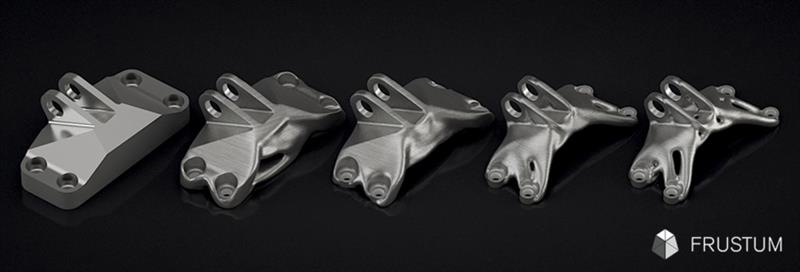But, thanks to cloud technologies and advances in simulation, 3D printing and machine learning, the concept of generative design in product development is finding broader applications. And with that, it is now time to think about the future role of the product developer.
Simply put, generative design means humans and computers working together to create objects beyond human imagination.
True CAD
While product developers and engineers have been designing and creating new products, components or larger constructions using computers and modern CAD software, generative design turns the computer into the driving creative force.
Engineering designers define design parameters and functional requirements such as maximum size, weight, type of material, load capacity, manufacturing process or costs. The computer then calculates optimal geometry and creates thousands of design drafts that meet the specified criteria. Thus, simulation is integrated into the development process through generative design.
Paul Haimes, PTC’s VP, business development and field engineering, says: “The advantages that companies achieve through the generative design process alone are manifold: The productivity of the product development department in the design phase increases immensely as well as the gain in creativity and innovation if more time can be invested in researching conceptual designs.”
For example, he says, it is possible to develop more powerful designs with lower weight and improved durability. This type of development also promotes the optimisation of new products for improved manufacturability, the reduction of material costs and shorter production times, and it allows a high degree of personalisation. Because simulation, analysis and manufacturing are all on the same level, the risk of costly rework is reduced, which can further reduce time to market.
AI chooses
After several thousand design drafts have been developed, using generative design and a possible catalogue of boundary conditions, AI selects the most suitable version based on the specifications. The developer, however, can have several design variants selected at this point using various parameters such as the best suggestions for different materials i.e. the lightest model with the greatest possible stiffness. Criteria, such as material or design requirements or parameters linked to production costs, such as production volume, are converted immediately by the software.
The technology provides the developer with optimised designs for several targets simultaneously in a very short time. Once the possibilities have been explored, the first prototypes can be produced in milling machines or 3D printers, or the results can be automatically incorporated into tests based on other findings, including cost calculations, supply chains and quality data. This not only saves time, but also increases output.
Generative design
At this point, it is important to review the difference between generative design and other technologies such as topology optimisation, grid optimisation or the like, which are often listed under one name.
Haimes says: “While generative design is based on a ‘white sheet of paper’ for which the product developer only defines a few framework criteria, all other technologies refer to the optimisation of an alreadyexisting design through simulation on the 3D model.
“Here, for example, the aim is to reduce the weight without changing the outer shape of the component. However, this does not create completely new design possibilities as in generative design.”
Having the last say
Generative design and AI change the entire product development process and thus the role of the product developer or engineer. Rather than being the driving creative force, in this process they become more of a curator of the results.
“Although he remains involved in the design phase from the outset, he only defines the parameters for the computer and then juggles with a few objectives such as the fastest production variant, the most cost-effective model in production or the variant with the best product characteristics,” Haimes explains. “This has the advantage, among other things, that he no longer must defend his models against other decision-makers; after all, all of them have been created using algorithms, whereby the respective optimum can be assumed.”
However, an important role remains: The examining eye in terms of optics and aesthetics. The computer does not (yet) possess this. It calculates all given parameters and implements the optimal design according to technical aspects.
“Does a car ultimately have an appearance that appeals to the buyer despite its ‘optimal’ design, or does it become a shelf warmer for car dealerships? What about colour and people’s aesthetic sense of form? Does a material feel ‘better’ in the calculation despite its poor performance and is it more likely to be bought? These are all questions that demand the product developer’s broad set of multisensory capabilities and experience,” says Haimes.
Ready for daily use
Generative design and AI have reached a maturity that makes a wide range of applications possible.
According to Haimes, “This is ensured by new application packages, such as PTC’s future Creo portfolio, in which the ANSYS visualisation technology and Generative Design technology shifts the analysis to the beginning of the design process.”
Using the integrated functions of Frustum and ANSYS, Creo can recommend design methods with generative design, guide users through the iterative design process with ANSYS Discovery Live and validate the complete product to scale with the more comprehensive ANSYS Discovery package.
Gone are the days of slow applications that cost more time than they save. As a result, generative design and AI are likely to be more widely adopted as companies increasingly discover the benefits of this technology. Especially the first users who will be able to design and manufacture products faster and offer them with improved features or at a lower price.












